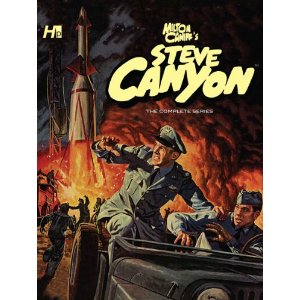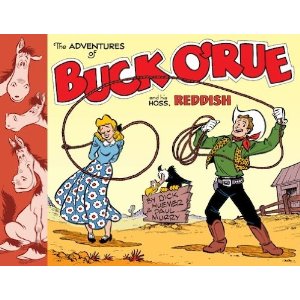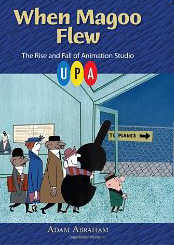
"What's New" Archives: August 2012
August 13, 2012:
August 13, 2012:
More on the Flypaper Sequence
To see some recently uncovered sketches and revisit this frustrating puzzle, click on this link.
From Mark Sonntag: It's an interesting puzzle, I do think the sketches look very much like Webb Smith's story sketches for On Ice, even the writing looks the same, maybe that's the clue. As a board artist and once upon a time an animator, I always thumb what I do, I think everyone does, but what strikes me as odd is how labored the sketches seem. They don't feel like an animator trying to feel his way into the action or the character's head. They feel more like somebody whose worked out the gag and is getting them ready for presentation. My feeling is that Fergy would have been far more sketchy, working fast getting the thoughts down, almost in scribble. The faster the better, the more spontaneous the work becomes. These are very thought out. I think the answer is in the writing on the drawings.
MB replies: Mark's comment is, I think, the most persuasive explication of these sketches so far, especially when they're set beside drawings that are unquestionably Norm Ferguson's, the "Fergy roughs" that I posted here a few years ago.
[Posted September 16, 2012]
Incommunicado
That's what I've been lately and what I'll be for a few weeks more, for mutliple reasons, but I did want to come up for air long enough to mention a few recent books:
 The Comic-Book Caniff: I've mentioned here the beautiful new book on Walt Kelly by Thomas Andrae and Carsten Laqua. The publisher of that book, Hermes, has just brought out a smaller but almost equally impressive book, Steve Canyon: The Complete Series Volume 1, collecting the seven issues of the Steve Canyon comic book published by Dell in the 1950s. This comic book was no careless knock-off: the artists involved (William Overgard on the first issue, published in 1953, and Ray Bailey on the rest) mimicked Milton Caniff's style expertly, and Caniff himself carefully oversaw the first issue and did some of the inking of Canyon's face himself, a task he also assumed to a lesser extent on later issues.
The Comic-Book Caniff: I've mentioned here the beautiful new book on Walt Kelly by Thomas Andrae and Carsten Laqua. The publisher of that book, Hermes, has just brought out a smaller but almost equally impressive book, Steve Canyon: The Complete Series Volume 1, collecting the seven issues of the Steve Canyon comic book published by Dell in the 1950s. This comic book was no careless knock-off: the artists involved (William Overgard on the first issue, published in 1953, and Ray Bailey on the rest) mimicked Milton Caniff's style expertly, and Caniff himself carefully oversaw the first issue and did some of the inking of Canyon's face himself, a task he also assumed to a lesser extent on later issues.
Caniff may have written the first story, too, although the later issues were written by Paul S. Newman, a stalwart on Western Printing's Dell titles (Turok, The Lone Ranger, et al.) for decades. The stories are of course slanted more toward young male readers than Caniff's newspaper strip, but they're still eminently readable.
What attracted me to the Dell comic books in the 1950s was the sense that the people producing them cared about their product. That concern with quality is reflected very well in the new book, not just in the comic-book stories but in how well they're reproduced. There's a comprehensive introduction, too, by John R. Ellis, that makes excellent use of Caniff's papers at Ohio State. A second volume, on Steve Canyon's Harvey years, is scheduled for publication late this year.
John Ellis also oversees a blog devoted to the short-lived Steve Canyon television series of 1958-59, starring Dean Fredericks, which Ellis and the Milton Caniff Estate have been shepherding onto DVDs. This is a good time for Caniff fans.
Buck O'Rue: I'm still digesting another new book, The Adventures of Buck O'Rue and His Hoss, Reddish (Classic Comics Press), which collects the complete 1951-52 run of the humorous western comic strip written by Dick Huemer and illustrated by Paul Murry.
 What makes this book so special to me is that Dick Huemer was one of my very favorite people in the whole animation business. I visited him at his North Hollywood home any number of times (there's a photo in the book of Huemer and Murry in Dick's library, where I recorded a couple of interviews with him), and after he died in 1979 I visited his widow, Polly, who was as delightful a person in her own way. What a privilege to have known them.
What makes this book so special to me is that Dick Huemer was one of my very favorite people in the whole animation business. I visited him at his North Hollywood home any number of times (there's a photo in the book of Huemer and Murry in Dick's library, where I recorded a couple of interviews with him), and after he died in 1979 I visited his widow, Polly, who was as delightful a person in her own way. What a privilege to have known them.
Dick's son, Richard P. Huemer, deserves enormous credit for assembling the new book (with Germund Von Wowern); there's only a hint in the book of the difficulties involved in locating the source material, but I'm sure those difficulties were enormous. My impression so far is that everyone involved did a first-rate job. There are revelations in the text features; I never knew that Dick wrote Bugs Bunny and Porky Pig comic books in his time away from Disney in 1948-51. I remember buying both of the comic books mentioned ("Sheik for a Day" and "President Porky") at my local drugstore in 1950, in preference to current Disney titles, so Dick must have made an impression on me even that early.
I haven't read enough of the strips themselves to offer informed comment yet. Paul Murry was never one of my favorites, but if he was good enough for Dick, I must assume that he's good enough for me. For more detailed comments on the book, visit these posts by Jerry Beck and Michael Sporn. I'll try to have more to say myself, later.
When Magoo Flew: I've intended for months to write a rather detailed review of Adam Abraham's When Magoo Flew: The Rise and Fall of Animation Studio UPA (Wesleyan University Press), but I've never managed to do that, and I hate to put off writing about it any longer. Anyone whose interest in Golden Age Hollywood animation approaches mine probably already owns the book, but if not, a purchase is in order.
 I helped Adam considerably with this book, mainly by providing him with transcripts of interviews with UPA people who are no longer with us. That's most of them, unfortunately, but Adam did locate a surprising large number of interviewees with UPA connections. I have no reason to regret the help I extended—factually, When Magoo Flew is very solid. I cut a lot of interview material (twelve single-spaced pages' worth) from my own Hollywood Cartoons: American Animation in Its Golden Age, and Adam restores a lot of the information I thought was getting in the way of my own story. I did notice one possible error in connection with one of my interviews. Was Shirley Burden (a man) still Les Novros's partner at the time of Hell-Bent for Election in 1944, as Adam says? Or did Novros have no partner then, as he told me in an interview that I made available to Adam? Should you care? Not unless you are as accuracy-obsessed as I am.
I helped Adam considerably with this book, mainly by providing him with transcripts of interviews with UPA people who are no longer with us. That's most of them, unfortunately, but Adam did locate a surprising large number of interviewees with UPA connections. I have no reason to regret the help I extended—factually, When Magoo Flew is very solid. I cut a lot of interview material (twelve single-spaced pages' worth) from my own Hollywood Cartoons: American Animation in Its Golden Age, and Adam restores a lot of the information I thought was getting in the way of my own story. I did notice one possible error in connection with one of my interviews. Was Shirley Burden (a man) still Les Novros's partner at the time of Hell-Bent for Election in 1944, as Adam says? Or did Novros have no partner then, as he told me in an interview that I made available to Adam? Should you care? Not unless you are as accuracy-obsessed as I am.
There are, however, minor annoyances throughout the book, as in Adam's melodramatic handling of the Disney strike ("If Goofy [Pinto Colvig] could be fired, no one was safe"). Adam seems to take at face value Jack Kinney's assertion that Walt ultimately fired all the strikers—a statement that surely would have surprised, among others, Ken Peterson, a striker who was the head of the Disney animation department in the '50s.
When the book gets into the post-Steve Bosustow years, from 1960, it enters territory that I barely visited in Hollywood Cartoons, and I must say I enjoyed it more. The cartoons Adam writes about mostly stink, but the gossip is much better.
What I find missing in When Magoo Flew is real enthusiasm for any of the UPA cartoons on Adam Abraham's part, or, at least, any enthusiasm that he conveys to this reader. I did not come away from the book thinking to myself, I need to see those cartoons again, they must be better than I thought. The word that always comes to mind when I think of UPA is "prissy," and When Magoo Flew did not lead me in another direction. Perhaps this is because it was written with an academic audience in mind. I don't know for sure that that was the case, but writers for an academic audience tend to suppress their own voices rather than risk defying their audience's expectations and perhaps jeopardizing a career. Thus the uniformity of tone and attitude in so much academic writing, even when jargon is absent.
But at least When Magoo Flew is an accurate chronicle of a cartoon studio that, whatever its many shortcomings, had an undeniable impact on its industry. That's enough for me to recommend it without reservation.
Benzon on Dumbo: This isn't a book, at least not yet, but Bill Benzon has been writing at length and in detail about Dumbo on his blog, New Savanna, in posts drawing upon his background in literary criticism. He admits to having a book about Dumbo ultimately in mind, and that seems like the logical outgrowth of what he has been writing about that film. Bill's writings about animation can be daunting for those readers used to ordinary fan writing, but make no mistake, it's precisely this kind of serious thinking and writing that will be increasingly important in keeping interest in Dumbo and other animated features alive and thriving in the years ahead.
From Thad Komorowski: I've always hated most of Paul Murry's art for the Disney comic books. While he drew some decent stuff early on, it was his ugly, mushy, and wordy Mickey Mouse stories that were always shoved in my face in various reprints. It got under my skin and made my flesh crawl. Having read the Buck O'Rue book in its entirety, I think his career was completely wasted drawing Mickey—this is the kind of stuff he was born to draw. Creepy, gangly humans, buxom girls, and the occasional stupid animal—it's just fantastic cartooning. I am often overwhelmed by claustrophobia with the compositions in Murry's Disney art, but not here. Combined with Dick Huemer's charismatic writing, it plays like a smarter, more likable version of Al Capp's Li'l Abner. It's a gem of a strip. Nothing earth-shattering, as it won't change anyone's perceptions about the other syndicated greats, but a lost gem all the same.
I'm glad you liked When Magoo Flew, and, as you know, I agree that there's no discernible passion in the writing due to the academia. The other thing that bothered me greatly, which I stupidly didn't mention in my own review, was his statement that Crawford Crow was a Negro caricature in Tashlin's Fox and Grapes. That of course is proven entirely false if you actually watch the cartoon. I suppose someone else will continue perpetuating that Heckle and Jeckle are supposed to be black guys whenever a history of Paul Terry is written. I should hasten to add that I had a few friendly e-mail exchanges with Adam Abraham a few months ago, and he proved himself very cordial over our disagreements over some of his assessments and he was appreciative that I took the time to review his book so thoroughly. It's an important tome and I'm glad he wrote it and that you were gracious enough to give him thorough assistance.
From Adam Abraham: Thank you for the thorough review of When Magoo Flew. I added a response and a link on the book's Web site (whenmagooflew.com).
Your criticisms are just. I am aware that Jack Kinney's comment that Walt Disney fired "every single" striker was hyperbolic. I should have qualified his remark. For Shirley Burden, my source was Steve Bosustow, in a recorded conversation from 1978. He referred to Novros's "partner" who refused Hell-Bent for Election. It's possible that Bosustow was mistaken or that Burden left Graphic Films soon after.
In any case, I am glad that you do not regret lending assistance to my project, and I very much look forward to your next publication.[Posted September 16, 2012]